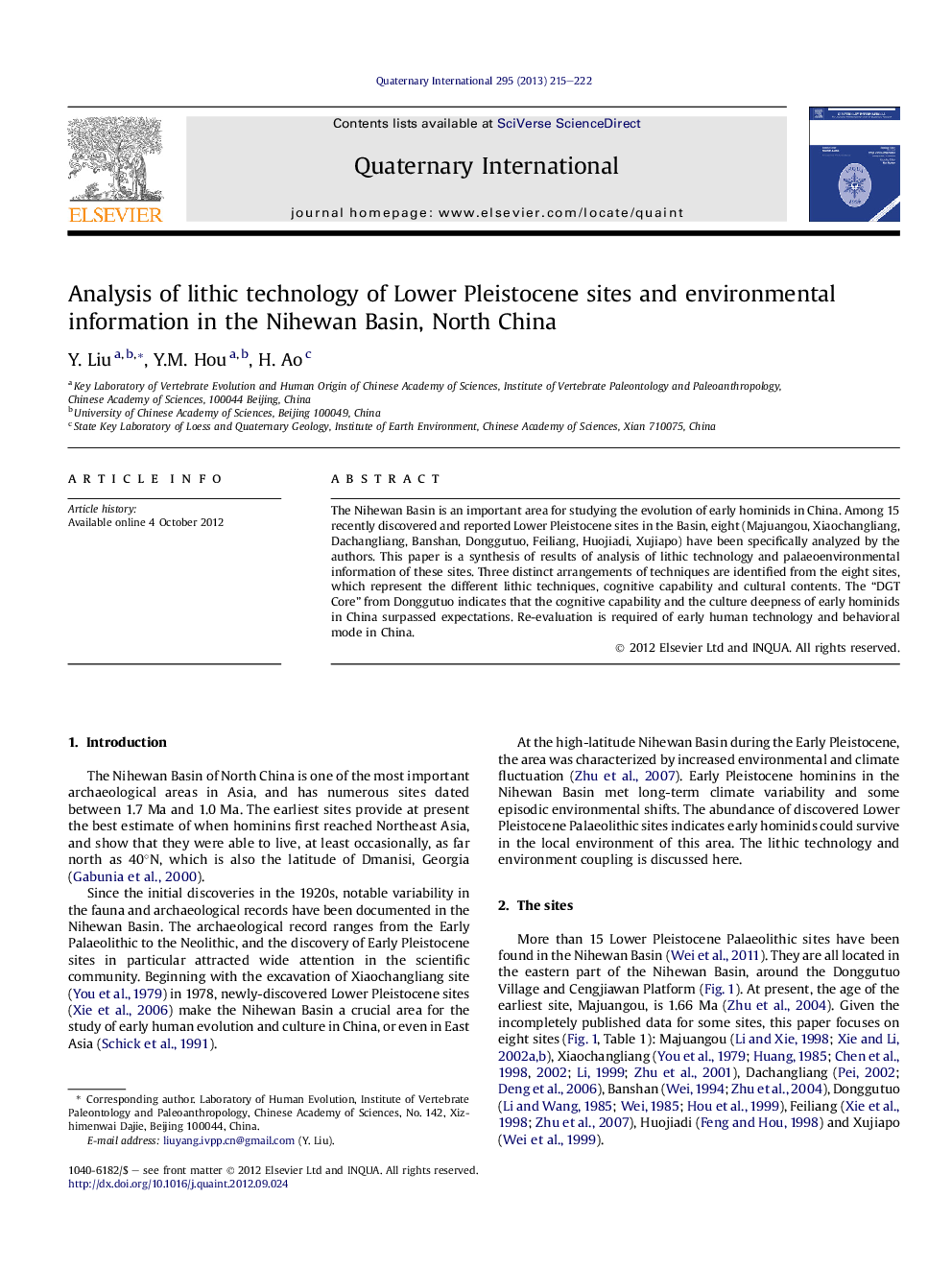| Article ID | Journal | Published Year | Pages | File Type |
|---|---|---|---|---|
| 1042256 | Quaternary International | 2013 | 8 Pages |
The Nihewan Basin is an important area for studying the evolution of early hominids in China. Among 15 recently discovered and reported Lower Pleistocene sites in the Basin, eight (Majuangou, Xiaochangliang, Dachangliang, Banshan, Donggutuo, Feiliang, Huojiadi, Xujiapo) have been specifically analyzed by the authors. This paper is a synthesis of results of analysis of lithic technology and palaeoenvironmental information of these sites. Three distinct arrangements of techniques are identified from the eight sites, which represent the different lithic techniques, cognitive capability and cultural contents. The “DGT Core” from Donggutuo indicates that the cognitive capability and the culture deepness of early hominids in China surpassed expectations. Re-evaluation is required of early human technology and behavioral mode in China.
